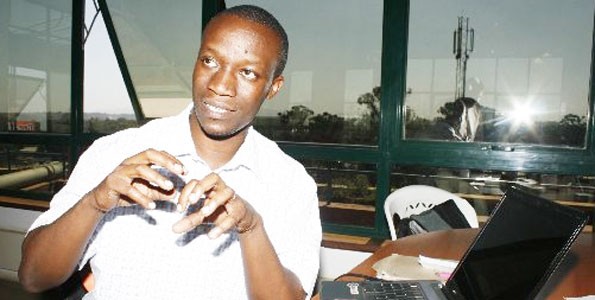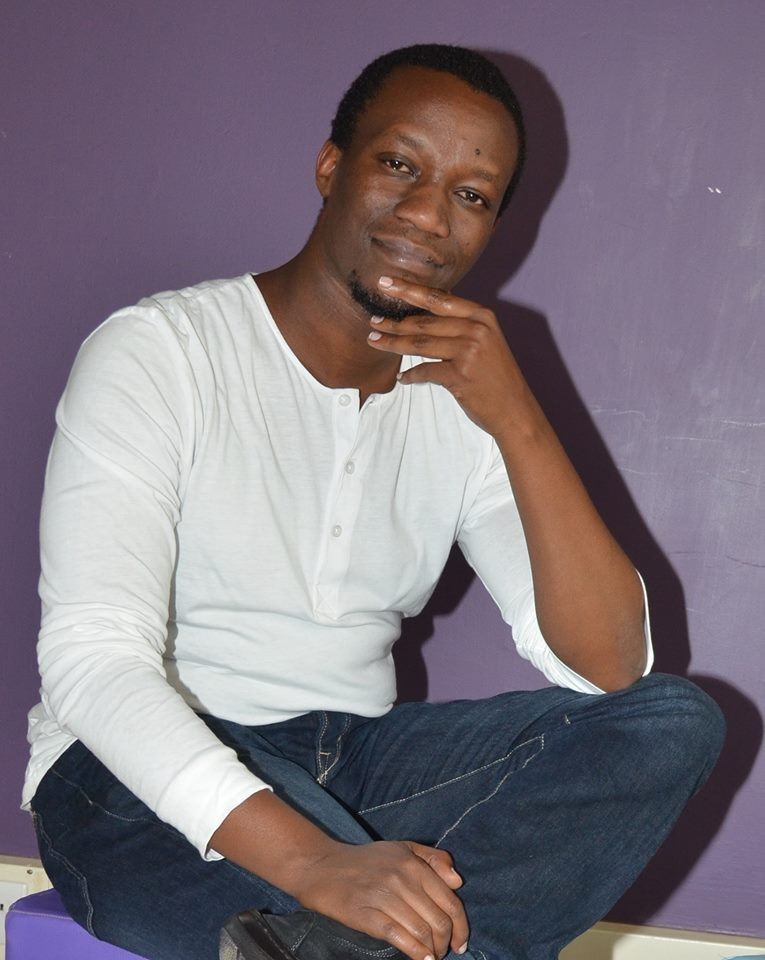Sam Gichuru
Post on: 16 Март, 2015 No Comment

..adventure, fun and technology
Disclaimer:
I write on the go and when I am inspired, most articles are unedited and very raw, I would not encourage a grammar Nazi to read.
Featured
Before Anybody Convinces You That NGOs Are Messing Up The Tech Ecosystem
For sometime now, I have watched a few people trash the local tech ecosystem. Before I continue, I know I will have sparked some fires and stepped on a toe or two by the time many of you are done reading this article; I am open to alternative views.
From tweets to online conversations, I have noticed some worrying trends that would make any investor hesitant. Reading comments from two investors who have stepped into the (Kenyan) market in the last 2 years:Nikolai of (88mph),whose sentiments can be read on this article on Wired.co.uk , as well as other magazines, including Mbwana’s (Savannah fund) tweets, one is led to believe two things.
- NGOs are spoiling the tech ecosystem with too much fluff money,
- There is too much hype and very little action in Nairobi
Both are wrong.
New thinking: You can clone tech startups from west 80% in South Africa, Innovate 20%. But its other way around in Subsaharan Africa 20/80
Mbwana (@Mbwana) June 9, 2014
Back in Dar es Salaam, land of 4G Productivity is about to go up. No offense Nairobi
Mbwana (@Mbwana) May 19, 2014
An investor must have come to Kenya, saw the hype in tech scene and on their out of JKIA had a great breakfast at Java House & invested
Mbwana (@Mbwana) May 16, 2014
I have a lot of respect for these gentlemen, but I strongly feel that its time for some local perspective on a public platform. As a contributor of what we are happy to refer to today as “The Silicon Savannah”, its time for me to get off the bleachers and share my two cents.
1. Who Funded the Building of the Tech Ecosystem in Kenya?
I need to make this very clear here:
a) It was not the Government, whom I acknowledge played a key role in laying out the Fiber Optic Cable and not forgetting the Konza City plans, Kenya’s dream tech city.
b) Neither was it the Private Sector,
c) It was definitely not any PE fund, the likes of Savannah or 88 MPH.
Yes my good people, I said it. It was NGO fluff money that funded what we do today. We all know iHub was the lead in this space followed closely by Nailab. The fact is, these two spaces where funded by Omidya r, Hivos and 1%Club. respectively.
Before anybody convinces you that NGOs are messing up the Tech ecosystem: NGOs contributed largely to the building blocks of the ecosystem and are still doing so.
2. How Did This Ecosystem Grow?
Answer: Getting together .
Hackathons, Barcamp sessions and Startup weekends led to the formulation of the community . For the first time in the history of tech in Kenya, designers, developers and entrepreneurs had an opportunity to convene, debate, hack & showcase skill. Suddenly entrepreneurship was on everyone’s lips. Young people displayed the apps they were building, corporate professionals identified people they could hire and solutions that could be adopted into their systems, developers outsmarted each other on their level of skill, co-founders connected……. a community was birthed. A similar kind of community as the one seen in Silicon valley, just younger.
Back to the question of funding: who funded these sessions? Brace yourself: NGOs .
NGOs ran themed hackathons that exposed local developers to thematic problem areas that needed solutions. The once isolated developer was getting exposed, learning about local problems, much-needed solutions and making the best of their skills.
At this stage, we have a community, what happened next? Some greedy investors rushed into the space; in my opinion, too fast and uninformed.
3. The Growth of App Developers and Startups in Kenya
201o saw NGOs invest heavily in more tech-oriented gatherings that brought more developers, designers and other interested parties to the spaces; everybody wanted to develop an app, more “free” money was won and guess what? Young developers could now afford a better computer and a phone from their winnings to test their solutions.
Come end 2010, and the first foreign investor, fully focused on the startup space, stepped into the scene. 88Mph went straight to the NGO funded communities at iHub and run a competition that offered 1 million shillings to the winner.
M-Farm won the competition and I guess to their surprise learned that they had to give out 10% 20% equity to the IPO48/88MPh organizers. The game had changed. What was published as winnings had become an investment. But it was perfect: willing buyer, willing seller.
Please understand that high speed internet was only 1 year old by this time, the fiber having landed in Mombasa in 2009.
I know for a fact nobody in that competition knew what a term sheet was too soon. right?
The Winners of IPO48 201, The three ladies Jamila, Kate and Lillian, went ahead to start three companies, Mfarm, Ukall and Redcape this companies are still operational today.
And herein lies the first problem for the investor
The NGOs loved the solution M-Farm had designed. Being a young startup, they naturally needed more money to experiment and scale. NGOs were more than happy to offer a helping hand. Only one person was not making money: the investor who could not exit because the valuation had not changed. To make matters worse for him, the startup did not need his money in exchange for equity because they had enough money.
When you look at the infrastructure here, we should be miles ahead. But theres so much fluff money, no hard talk, NGOs propping businesses up it kills it Nikolai Barnwell, 88mph Ref: Wired

I will let you decide if to blame the startup for taking a much-needed investment without undue pressure from NGOs, or the investors who rushed to invest into a social enterprise, without understanding all the players in the ecosystem.
The statement above ,in relation to this story ,says this to the NGOs: Do not give startups money so that we can make money . Good for investors, bad for startups that need some form of seed funding.
Let me explain why these competitions are important.
Unlike developed countries, a Kenyan techie does not have access to credit facilities at 20, or after campus. A lot of sacrifices would have to be made, like selling their fathers assets, to buy a laptop. Neither does s/he have access to credit facilities that could enable him/her to buy that domain name, host an account, or pull high speed internet access to their house. NGO winnings are what funded these costs for many young developers doing amazing things today. I am yet to meet a VC who will cover early social overheads for an app developer despite their potential. (If you know of any please make that quick introduction and I will be the first to congratulate them).
4. International Press & The VCs
This interest grew faster due to international press coverage and the coining of the term Silicon Savannah. Suddenly more investor interests were piqued.
Did these startups run around the world talking about building the next Silicon Valley? No, they did not even have the networks to do that; the investors did that, they had the connections, they could not resist international media. It is ok to expose your investment, attract more investors and sell more products so … the hype grew. Just search and see who talked to international media in 2010/11/12.
All this attention spurred further VC investment. Again, with little to no local investment familiarity, coupled with minimum understanding of local problems, they went ahead to dispense money to what they imagined was the problem: bigger open tech spaces (read high overheads). They then went ahead to ask the aspiring innovators and developers to pay for rent. Some of these startups were incubated in other spaces at the time.
Two of the startups that 88MPH invested in: Ghafla and Sematime (tusqees), were incubated at Nailab for 12 months (rent-free). The two were part of five other start-ups. Trinc Media, Eneza and Card Planet (the other three), now have investments from Radio Africa and Savannah Fund respectively.
Who paid for their RENT at Nailab you ask? NGO money did, and to be very specific 1%Club.
So is there a place for donor funding in the value chain?
As I try and wrap my head around thisthey invested in these young developers but asked them to pay rent from the same investment……..case of from my left hand to my right.
Results: All that hype and few results led to frustration by both the investors and startups.
5. The Startup, Government, VC & NGO dilemma
As time has gone by, I have noticed fewer and fewer hackathons are being held. One of the building blocks of the eco-system is being abandoned. In fact, in the last 90 days, I can attest from my observation, to seeing a total of 3 hackathons done by independent spaces. Reason? Development aid organizations do not want to be criticized for “giving out incentives” to developers and startup by PEs who claim to be ready to invest but have barely made any impact. So what happens next? The following, is as I foresee it:
- Incubators will start receiving fewer applications because the pipeline is not very well stimulated and VCs will complain that there are fewer and fewer innovations in the country and guess what, they will move to the next country.
- Tech spaces will shut down and we will have all missed the tipping point.
So What Next, You Ask?
The VCs need to stop blaming NGOs for making earlier poor investment decisions. Just like the startups you failed, you need to pivot or persevere. Kenya has successful and winning startups like Pesapal. SevenSeas, Virtual City, Wezatele among many others doing extremely well and could do with some PE funding to scale even further.
You don’t hear smart investors like Richard Bell complaining because ZUKU is still growing.
I believe Govt & NGOs have laid and continue laying the foundational bricks; they are doing the hard lifting.Players in this industry should stop nitpicking on startups and how they have a silver spoon. Just because you had to walk from Kawangware to town does not mean the new innovators have to do that. We really don’t care how good the old days were. Let government and development organisations give out grants and run hackathons across the country if they can, this will keep the pipeline busy channeling out new developers, experimenting and learning. VC/PE funds can swoop down on those who successfully pull through, and in turn can make their X returns.
PE funds that want to invest in Africa should partner with the right local investors. Its foolish to think that you don’t need a local anchor investor who has run a business in the region and can provide the much-needed information/insights on how to grow a business locally. If you fail, blame yourself, not the region or ecosystem; make smarter decisions on your next investment.
There is a place and a role for everyone in this market . Development aid organizations have the money and can take the risk. They know the complexity that comes with doing business in Africa and can lay a good foundation. PE funds need to encourage and be a part of this, but be strategic, so that in the right time, they can invest into these already tested ideas at minimum risks and scale them to be competitive at a global level.
Africa is home for us, Africa is not for sissies.
10. June 2014 by @Samgichuru














